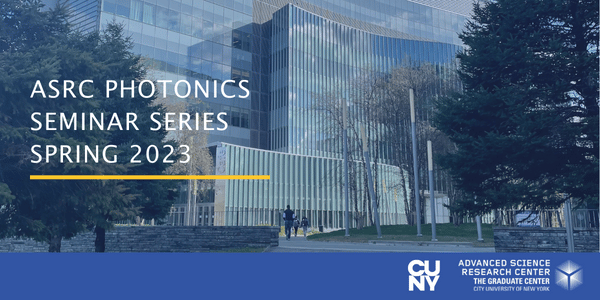
In this one-hour seminar, Albert Polman, Center for Nanophotonics, NWO Institute, AMOLF, will be presenting a talk titled:
Optical metasurface performing mathematical operations and making better solar cells.
Abstract – I will present our recent collaborative work together with Andrea Alù’s group at CUNY and Nader Engheta’s group at the University of Pennsylvania on the design, fabrication and operation of silicon-based optical metasurfaces that perform mathematical operations in an analog way, using light fields as input and output signals. We show how the precise interplay between scattering components in silicon gratings creates a transmission spectrum and angular dependence that creates a mathematical second derivative on an input image. Inspired by a design for the millimeter-wave regime in Engheta’s group, we then designed a metasurface that solves an integral equation using light in the visible spectral range, using grating orders in a periodicgeometry as input and output ports.
Interestingly, a similar scattering matrix formalism as for the equation solver also helps create a new geometry to enhance the efficiency of silicon-based multijunction solar cells. Using substrate-conformal soft imprint technology we create a metallodielectric metasurface backcontact for a Si/GaAs/GaInP triple-junction solar cell, with the semiconductor layers fabricated at Fraunhofer ISE (Freiburg), in which the scattering matrix is designed to optimize light trapping in the Si bottom cell. This results in a very high photovoltaic conversion efficiency of 35.6%. I will present a future perspective of this concept for other geometries, including silicon-perovskite tandem solar cells.
Bio – Albert Polman is Scientific Group Leader at AMOLF, one of the research institutes of the Dutch research counsel (NWO) in Amsterdam, the Netherlands. Polman received his master’s degree in physics (1985) and his Ph.D. degree in materials science and engineering (1989) from the University of Utrecht. From 1989 to 1991 he was a post-doctoral staff researcher at AT&T Bell Laboratories (Murray Hill, New Jersey). Since 1991 he has been associated with AMOLF, first as a group leader, since 1999 also as a department head. Polman is one of the pioneers of the research field of nanophotonics: the control, understanding, and application of light at the nanoscale. He is best known for inventing optical doping, i.e., the incorporation and optical activation of optically active ions in thinfilm materials by ion implantation. Polman’s research group at AMOLF specializes in fundamental studies at the interface between optical physics and materials science. Polman is an elected member of the Royal Netherlands Academy of Arts and Sciences (KNAW) and recipient of three ERC Advanced Investigator Grants (2011, 2016, 2021). He is Fellow of the Materials Research Society (MRS) and the Optical Society of America (OSA) and was awarded the Frew Fellowship of the Australian Academy of Sciences (2017), the EPS Research into the Science of Light Prize (2017), the Physica Prize of the Dutch Physical Society (2014) and the Julius Springer Award for Applied Physics (2014). Polman’s group has published over 340 articles in international journals that are cited over 37.000 times. In addition to his present group, Polman has educated over 40 PhD students and postdocs, and over 30 master students. The LMPV program that he leads has educated more than 100 PhD students, postdocs and master students.
This seminar will be presented in-person, with the option to join online via Zoom.
To join via Zoom:
ID: 871 5275 2281
Passcode: 700656
For further information, please contact:
Leah Abraha
labraha@gc.cuny.edu

